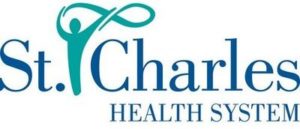 Understand how common locked-in syndrome is and learn what life is like for an affected person.
Understand how common locked-in syndrome is and learn what life is like for an affected person.
Jump To:
The exact numbers of cases of locked-in syndrome are difficult to find in medical literature, but many consider it a rare condition. A typical person is likely to live his or her entire life without ever meeting or knowing anyone with locked-in syndrome. But for the small percentage of people who develop it, locked-in syndrome can upend the lives of the patients and their families.
Locked-in syndrome is one of the most, if not the most severe form of paralysis. Patients have no muscle movement other than the eyes, require round-the-clock care, and need assistance for all daily living activities. The long-term costs of care for a patient with locked-in syndrome easily run into the millions of dollars.
If your loved one developed the condition because of medical negligence, an attorney from Newsome | Melton can help you pursue a malpractice lawsuit. Call 888-261-5614 for a free consultation.
What Is Locked-In Syndrome
Locked-in syndrome is a neurological condition that leads to total paralysis of all voluntary muscles except the ones controlling eye movement. Damage to a part of the brain stem called the pons is the leading cause of the disease.
The center of a neural pathway between the cerebellum and spinal cord, the pons is critical to the transmission of signals from the brain throughout the body. When you want to throw a baseball, for instance, your arm does not generate the movement. Instead, your brain tells your arm muscles to move by sending a signal via the nerve passageways in your spinal cord. The pons helps relay this nerve impulse. When the pons suffers severe damage, your muscles stop receiving signals from your brain.
Signs and Symptoms of Locked-in Syndrome
The hallmark of locked-in syndrome is total paralysis everywhere but the eyes. A patient can blink and can move his or her eyes vertically and sometimes horizontally but cannot move any other muscle and cannot speak. Locked-in syndrome does not affect hearing or cognitive function.
A patient can hear and understand what you say and is fully aware of what is going on around him or her. But he or she cannot speak, nor can he or she typically even breathe without a tracheotomy and an assistance device.
People with locked-in syndrome need 24-hour care and assistance. They cannot complete any daily living activities on their own. They require a feeding tube to eat and a machine to breathe. However, they have normal sleep/wake cycles and complete mental function. This makes it possible to communicate with them, though it is not easy — the only way they can convey thoughts is by moving their eyes.
What Causes Locked-In Syndrome
Locked-in syndrome has a few potential causes. The two most common are bleeding in the brain and lack of oxygen to the brain. Either of these can result from strokes, blood clots, or embolisms, or they can arise from infections or, in less frequent cases, blunt trauma to the head. ALS, or Lou Gehrig’s disease, may progress to locked-in syndrome in its final stages.
While locked-in syndrome often happens due to factors beyond anyone’s control, some cases result from medical negligence. If your loved one developed the condition after surgery or other medical treatment, you may have grounds for a medical malpractice claim.
A lawyer from Newsome | Melton can help you pursue damages from the doctor, the doctor’s medical staff, or the medical facility.
Prognosis of Locked-in Syndrome
Locked-in syndrome is almost always permanent. In rare cases, patients have regained minimal muscle movement — as in, they could move their fingers or toes. Even more infrequently, patients had made full recoveries, usually when a doctor was able to address the underlying cause of the condition within hours of its onset.
But for the overwhelming majority of those with locked-in syndrome, treatment should focus on adaptation, not on recovery. The best way to help a loved one adapt to this devastating condition is to learn to communicate with them. A good therapist can help.
Patients can learn to convey thoughts, emotions, and opinions via different patterns of eye movement. It is kind of like learning another language in that it can take a lot of time and effort to learn to communicate this way.
If you believe medical malpractice was the cause of your loved one’s locked-in syndrome, a lawyer from Newsome | Melton can help you recover damages. We offer a free consultation and work on a no-win-no-fee basis, meaning we get paid only when you do.
Brain Injury - News Articles

After nine months of waiting, Angela Marchant went into labor on July 22, 2016. She was rushed into the St. Charles Family Birthing Center, located in Bend, Oregon. The center is operated by the St. Charles Health System, which is one of the largest providers of medical care in the state of Oregon. According to
Read More
A 5-year old Pennsylvania boy was recently awarded $1.1 million in a medical malpractice lawsuit over a surgical procedure that left him with a brain injury. At only 11-months old, Keonte Graham suffered from sleep apnea so badly that his parents took him to Dr. Andrew Shapiro in 2007 for consultation and to find a
Read More